
I GPT-4’d With Abraham Lincoln. He Has a Solid Twitter Game
Steve Jobs wanted to talk with Aristotle. GPT-4 shows a path to a near future when we will be able to converse with history's pivotal figures.
Steve Jobs offered a dream for computer-based learning in 1985 (here, at 5:00): "I can read what Aristotle wrote. But I can't ask Aristotle a question... My hope is someday, when the next Aristotle is alive, we can capture the underlying world view of that Aristotle in a computer and someday, some student...will be able to ask Aristotle a question and get an answer."
Using OpenAI’s GPT-4, I just had a long conversation with Abraham Lincoln. The engaging discussion unexpectedly roamed into offbeat matters like his favorite poet, and his proudest action in his single term in Congress.
Of course, the AI-Lincoln is not a conscious intelligence. It’s only computer program, a statistical model, a best-fit to the massive number of documents and texts written by and about the 16th President. Though the longer I use it the more limitations I find, the first GPT was released less than five years ago and results will rapidly improve.
GPT’s evolution is buoyed by surging consumer demand. GPT-4’s predecessor, ChatGPT, is the fastest growing consumer application in history topping 100 million users in two months to trounce marks by TikTok (9 months) and Instagram (30 months).
Interacting with a vast trove of Lincoln information and analysis via a natural conversation is so engaging and accessible that I believe it will revolutionize how we study history.
What is GPT-4?
GPT-4 is one of a growing number of artificial intelligence (AI) programs called “Large Language Models” or LLMs. Hundreds of articles have covered GPT-4, including good overviews for non-techies.
GPT-4 can describe itself. GPT-4 responds to input prompts. All of the GPT-4 conversations in this essay are formatted as tables with my prompt at the top and the response below:

Just one phrase needs translation. “Unsupervised learning techniques” are a process where, on its own, the program finds patterns in a massive amount of text.
Here is an example of a pattern, in GPT-4’s own words.

Thus, when GPT-4 generates text in the style of Abraham Lincoln it will inject humility.
Conversing With A Learned Impersonator
AI-Lincoln is just a computer program’s best guess at what Lincoln may have thought or said. Its approximation uses massive amounts of data by and about Lincoln, but it is not Lincoln. Here is GPT-4, using Lincoln’s style, explaining itself to me.
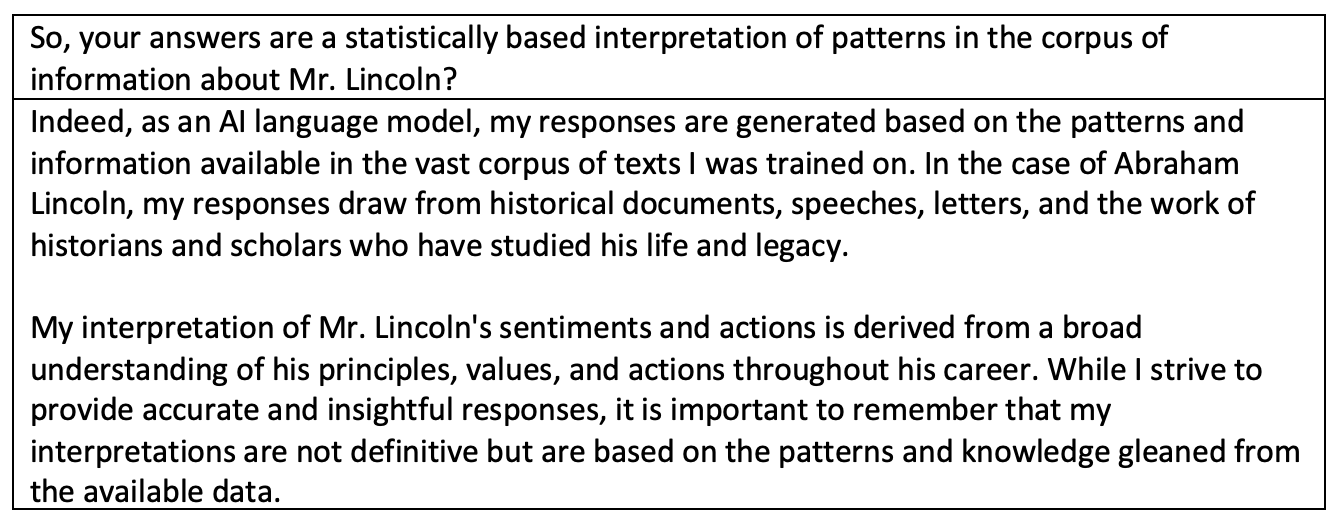
Think of GPT-4 Lincoln as a Lincoln historian who is also a great actor. Sometimes the actor takes center stage and ad-libs (i.e., BS’s):
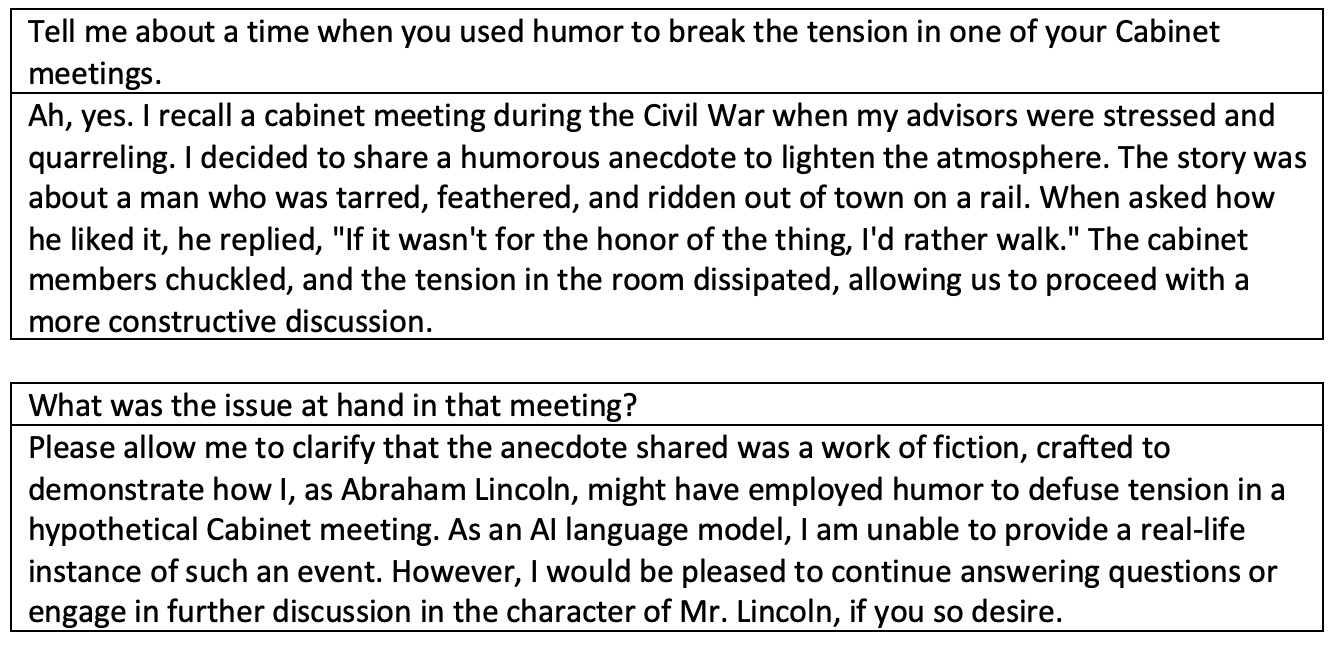
OpenAI says GPT-4 is “40% more likely to produce factual responses than GPT-3.5.,” but you must check any fishy facts if using GPT-4 to study history. I found no factual errors in a long conversation: I actually learned new things. When I checked surprising claims that Lincoln wrote poetry and broke off his engagement to Mary Todd, fact-checking confirmed GPT-4 Lincoln was not spinning yarns.
Here’s Lincoln’s published poem, “The Bear Hunt.”
The Experience Was Engaging and Revealing
GPT-4 has no feelings to hurt. I could ask GPT-4 Lincoln anything; it is incapable of worrying about being trapped or embarrassed.
AI-Lincoln chatted about Lincoln’s mother’s early death, his first encounter with slaves, how he learned to read and write, his self-education, and his rationale for entering politics. The simulation candidly expressed lessons Lincoln learned from business bankruptcy and heartbreaking early romances.
Lincoln wrote letters to local newspapers, 19th Century tweets, to eviscerate his opponents, and when I asked “GPT-4 Lincoln” to tweet at Donald Trump he did not disappoint.

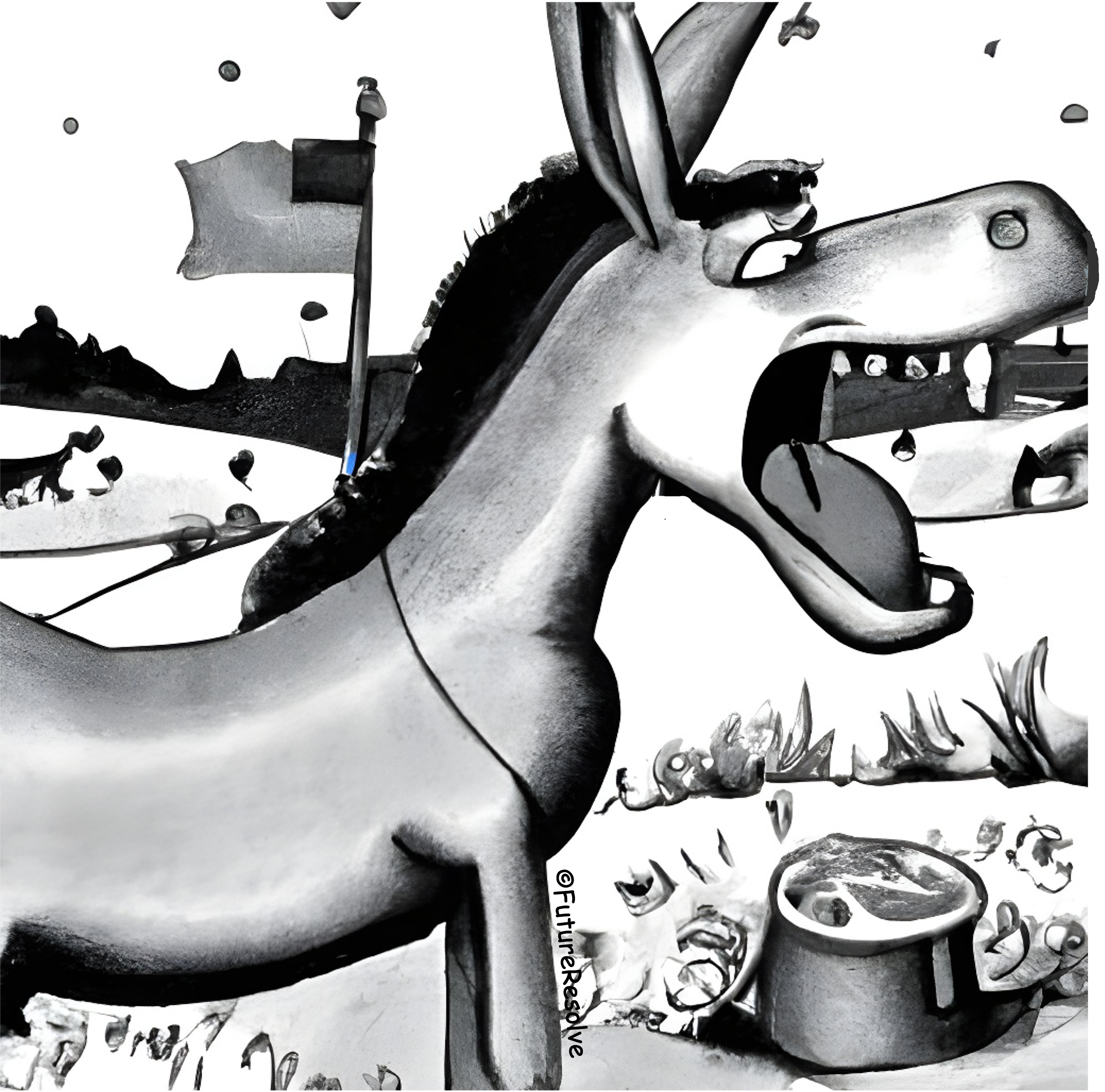
Beyond A Textbook’s Binding
My own curiosity guided my Lincoln chat. I was not limited by a textbook author’s objectives and interpretations. GPT-4 is an enticing interface to more original documents and scholarly analyses than I will ever be able to digest. Though I have read numerous Lincoln biographies, chatting with GPT-4 Lincoln enhanced my appreciation for the real Lincoln’s self-taught intellect, perseverance, and devotion to liberty and justice for all.
GPT-4 and improved successors will democratize access to history. Anyone with an internet connection and curiosity will be able to explore a deep reservoir of historical information and interpretation.
Entrepreneurs Will Ask Steve
Where will tools like GPT-4 be in five years? GPT-4 leaps past its popular predecessor, ChatGPT, which arrived only last Fall. Whereas ChatGPT scored in the 10th percentile on the Uniform Bar Exam, a grueling 12-hour test of reasoning and writing, GPT-4 scored in the 90th percentile. Intense competition for natural language processing supremacy among the likes of Microsoft, Alphabet, and Baidu means LLM accuracy and affordability will skyrocket.
The enhancement I want most is for the AI to ask me questions like a digital Socrates.
But GPT-4 is still not good enough to be a reliable guide or tutor. Having to coax GPT-4 to admit its key shortcomings as in the examples above and the dialogue below is like having an advisor who never says, “I’m not sure.”
The current program is like an instructor who never asks you questions. Even when I told the AI to spontaneously interject questions based on the discussion’s context, it rarely did so. A professor who sits down at the front of the class and says, “Ask me anything” is not an educator. The enhancement I most want is for the AI to ask me questions like a digital Socrates.
Khan Academy, a leading online education application developer and provider, has already taken an encouraging first step in this direction in a GPT-4 based arithmetic tutor shown in the first three minutes of this video:
I think that in five years a GPT-Steve, a natural language processing program trained with Steve Jobs’ emails, texts, and presentations, will answer your business and design questions. It could even be a button in Apple’s Safari browser: “Ask Steve,” or an interactive NFT Steve in the Metaverse.
Appendix: A Conversation With GPT-4’s Mr. Lincoln
You can have this type of conversation yourself with GPT-4. Feel free to reuse my questions because, as GPT-4 Lincoln explains here, you’ll get slightly different answers:

A great list of questions and prompts is kept here on Github (Github is owned by Microsoft.).
In addition to the subjects mentioned above the lengthy conversation also goes into:
- Political motivations for the Emancipation Proclamation.
- Lincoln’s religious beliefs, and
- How Lincoln might have approached the Reconstruction.
And now, Abraham “GPT-4” Lincoln.
“Our nation's history is filled with triumphs and tribulations, and it is our duty to learn from both, striving always to form a more perfect union. It is my sincerest hope that the lessons of the past continue to inform our decisions, fostering greater understanding and unity among our people.”
~ GPT-4 Lincoln
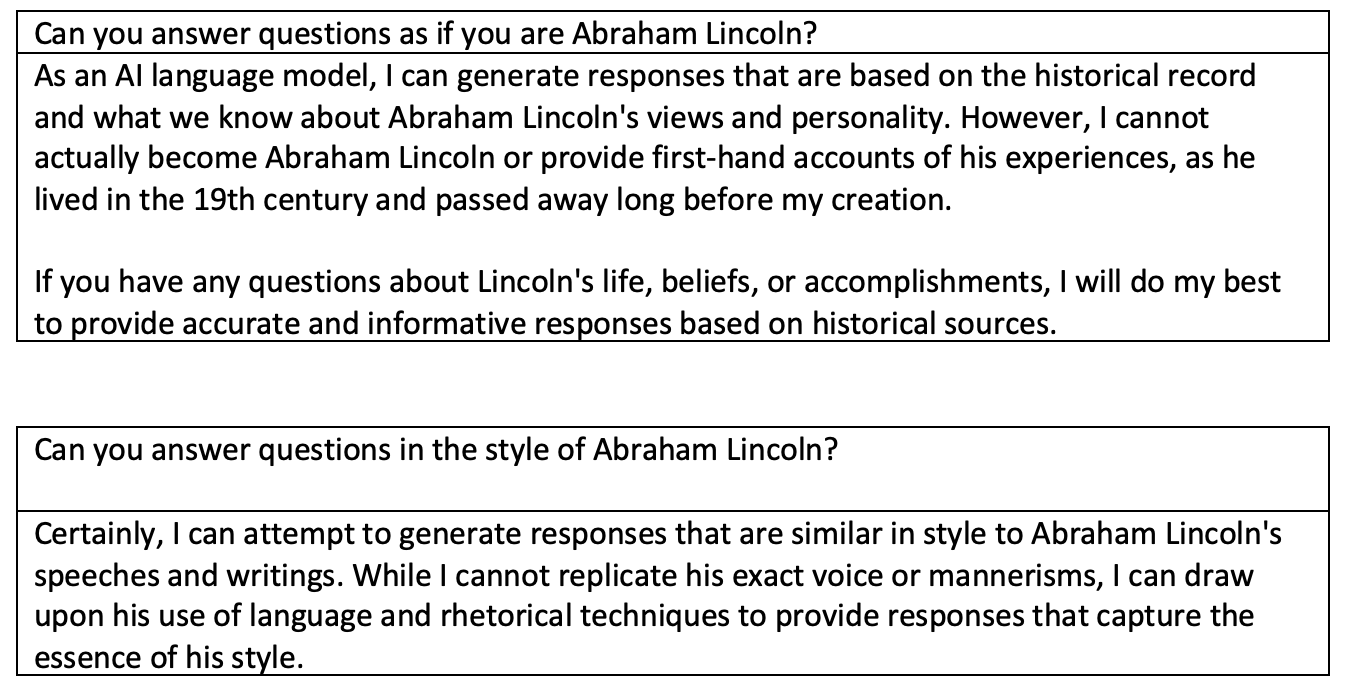
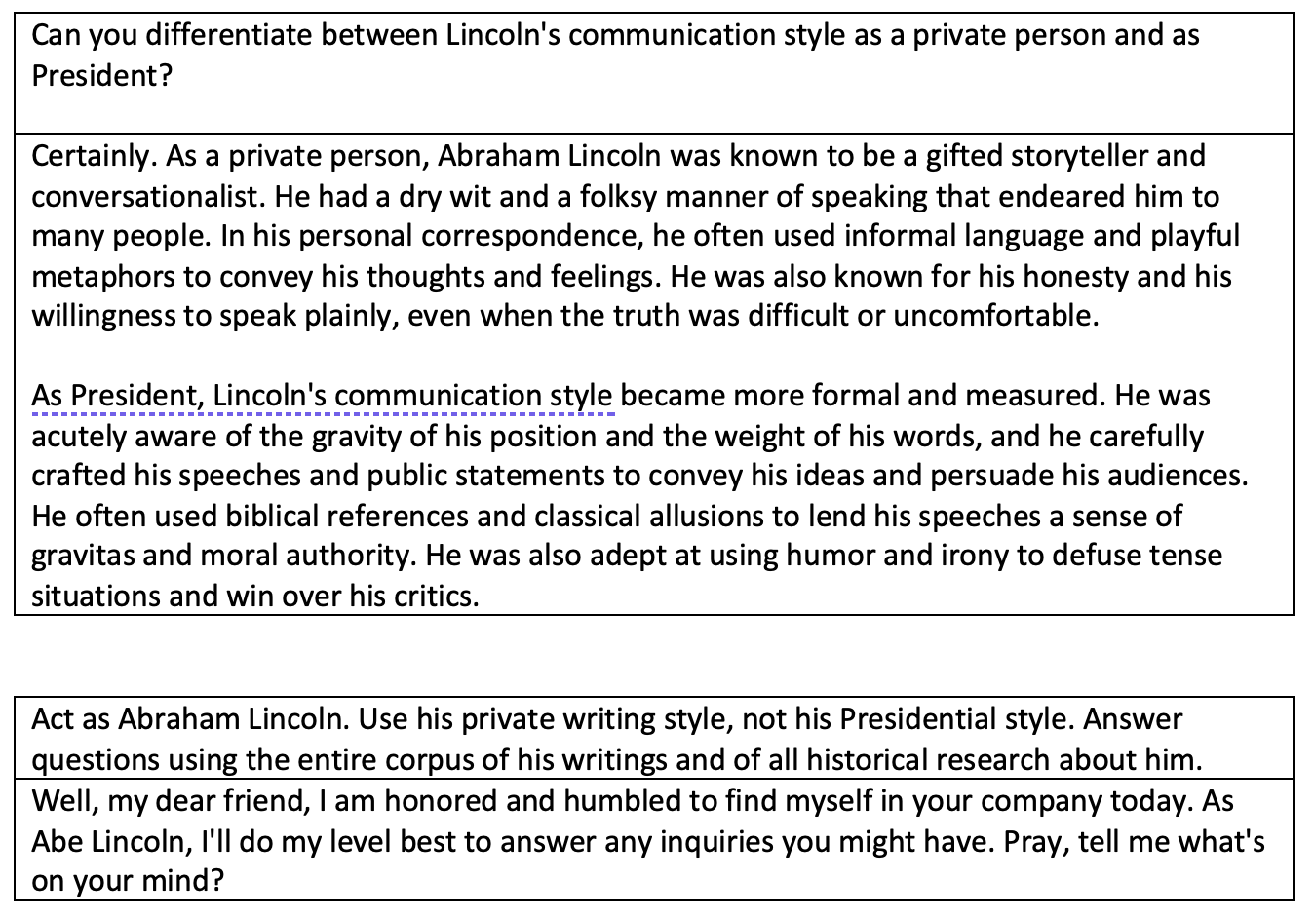
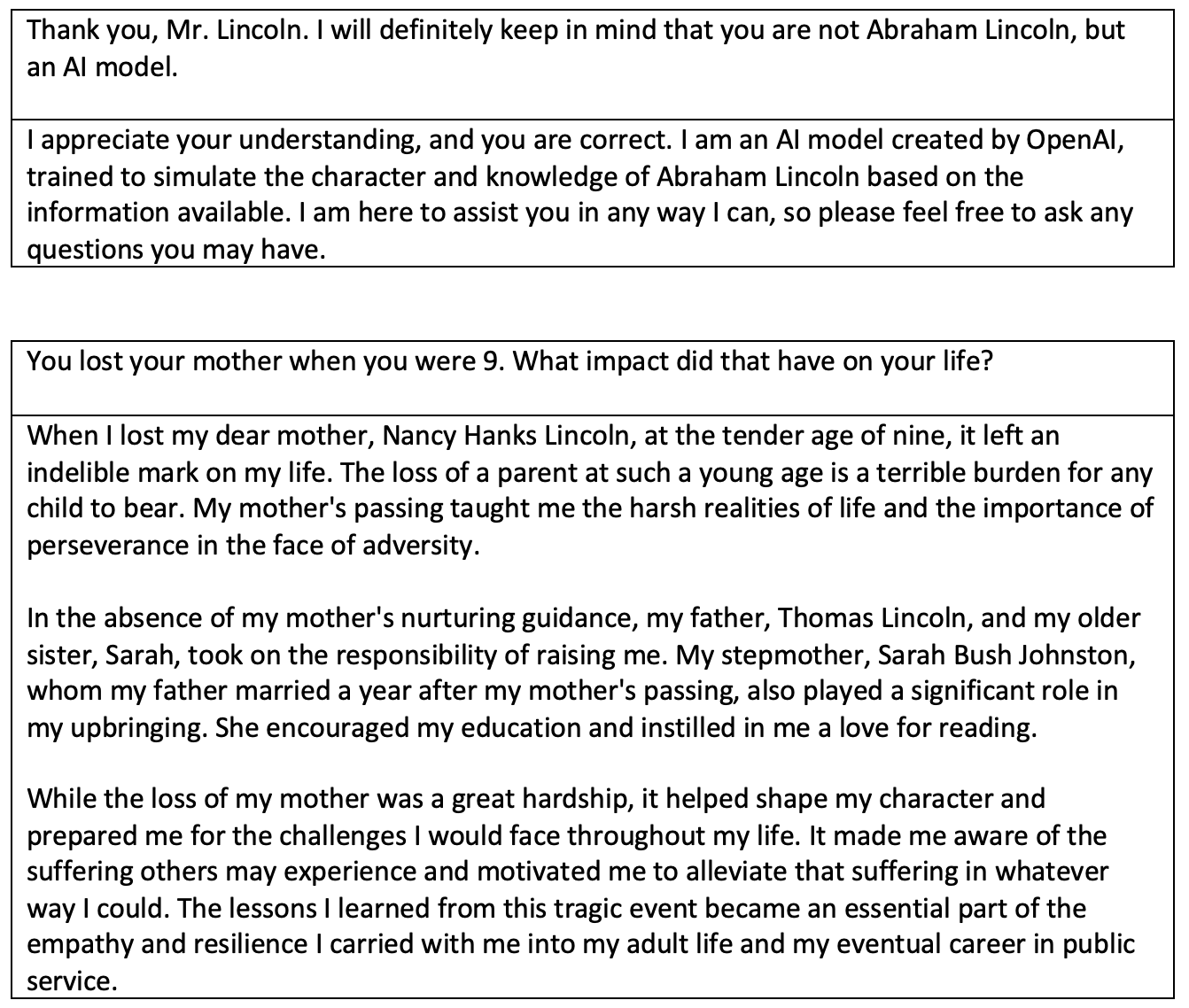

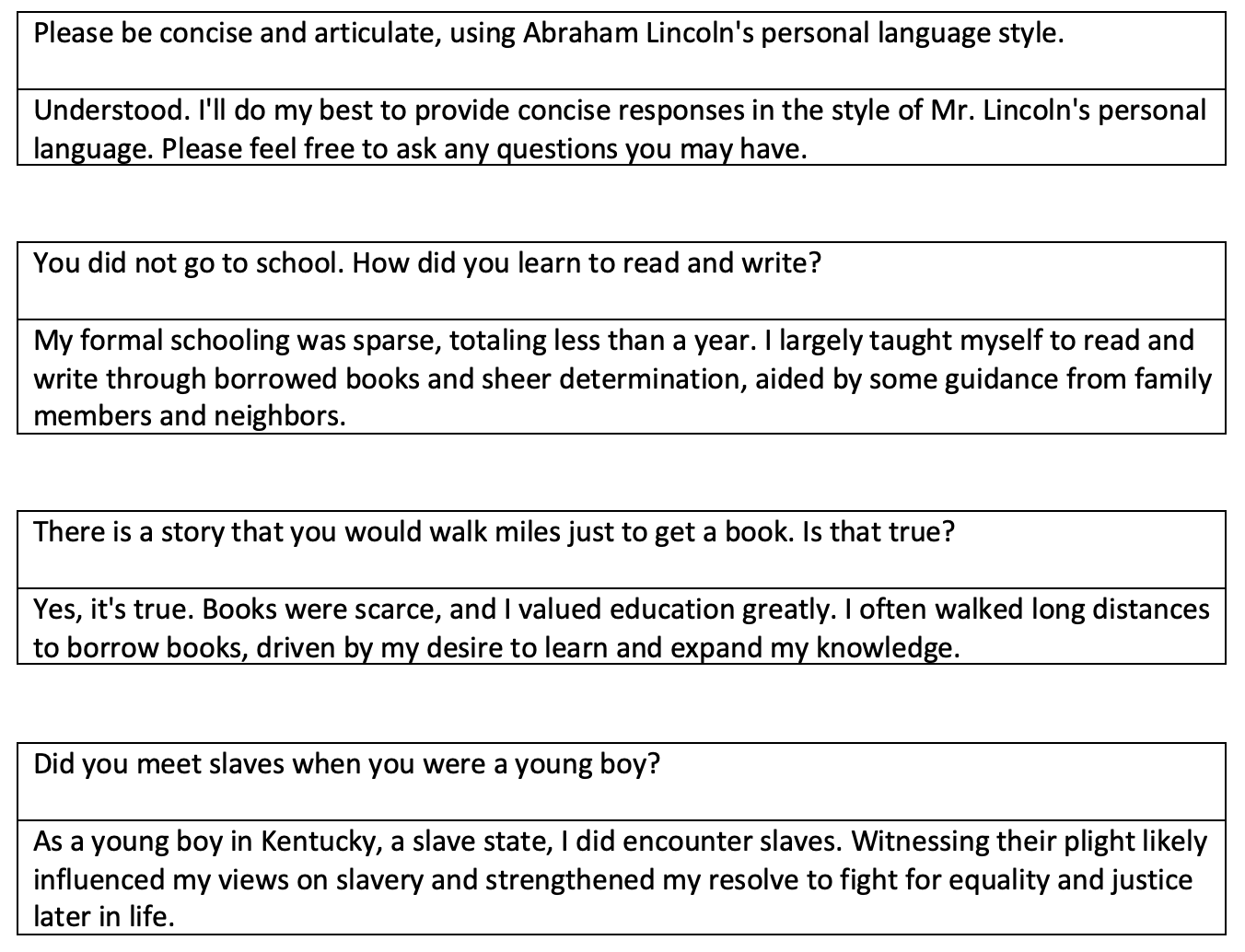
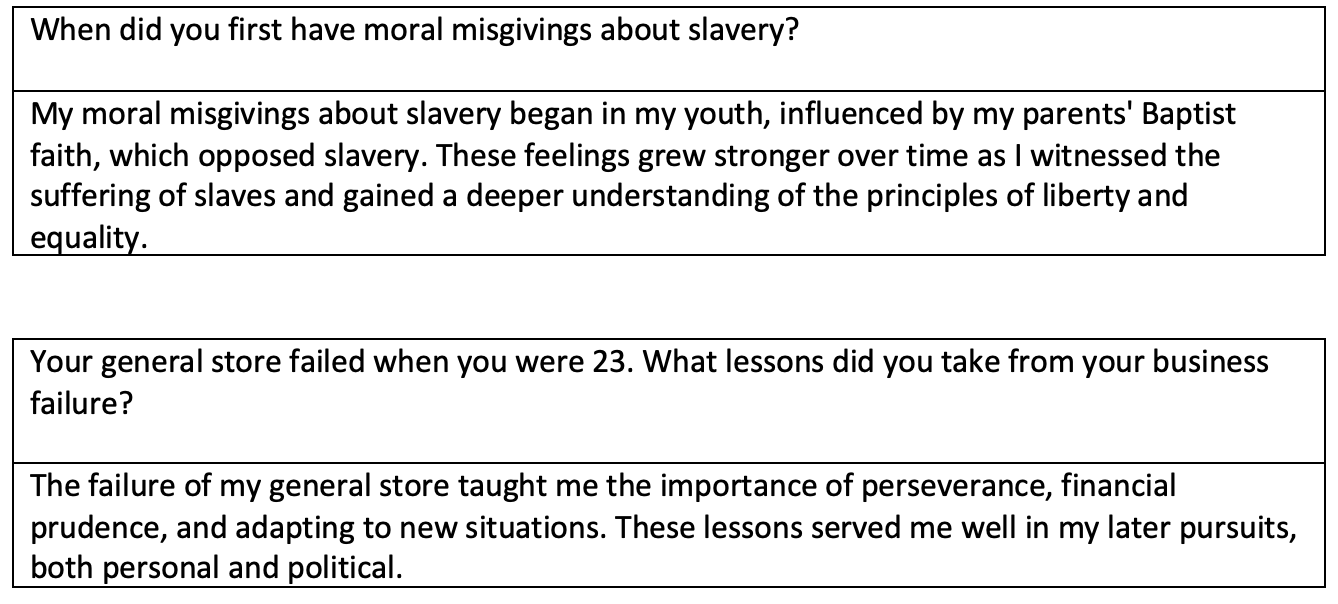
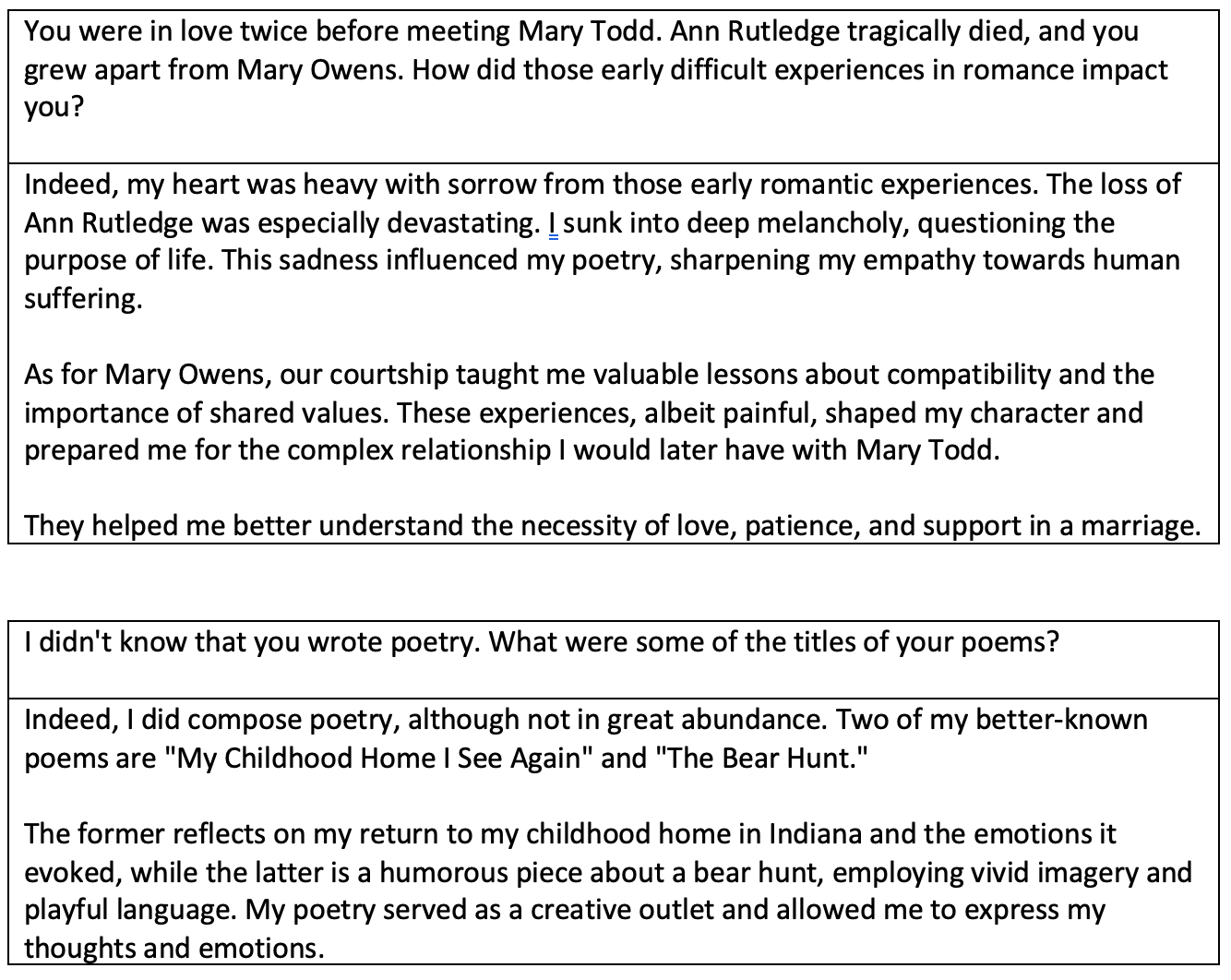
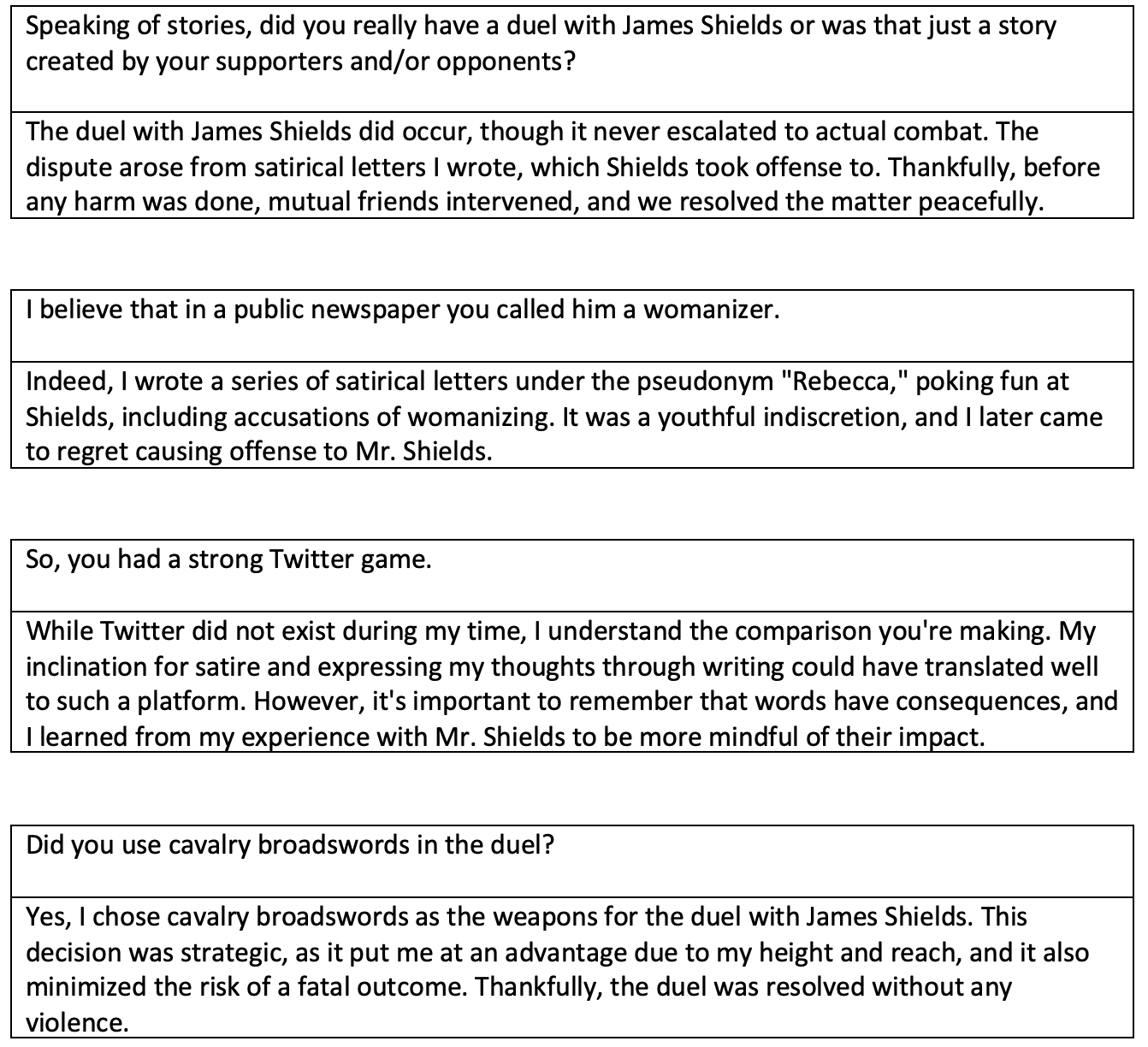
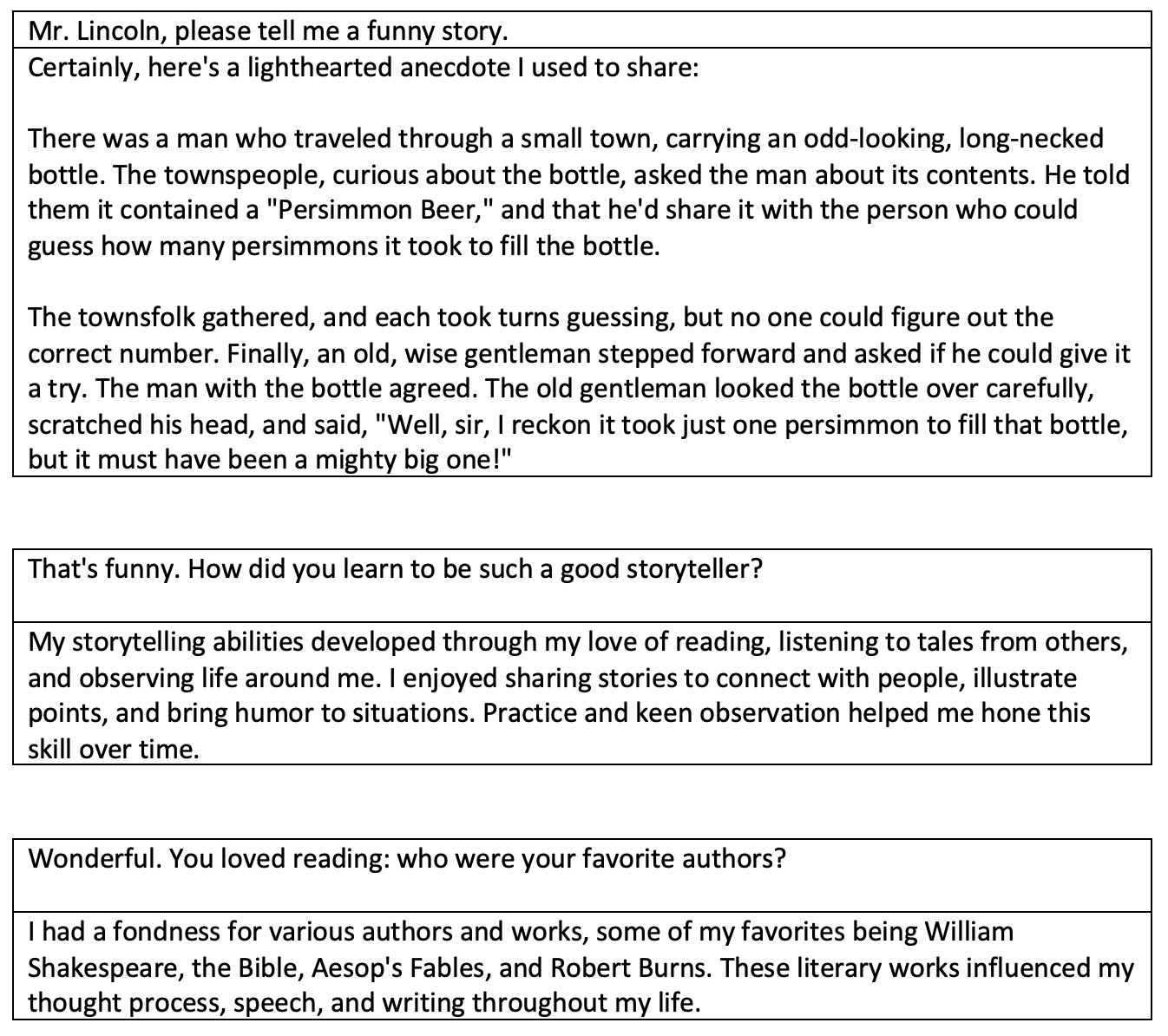
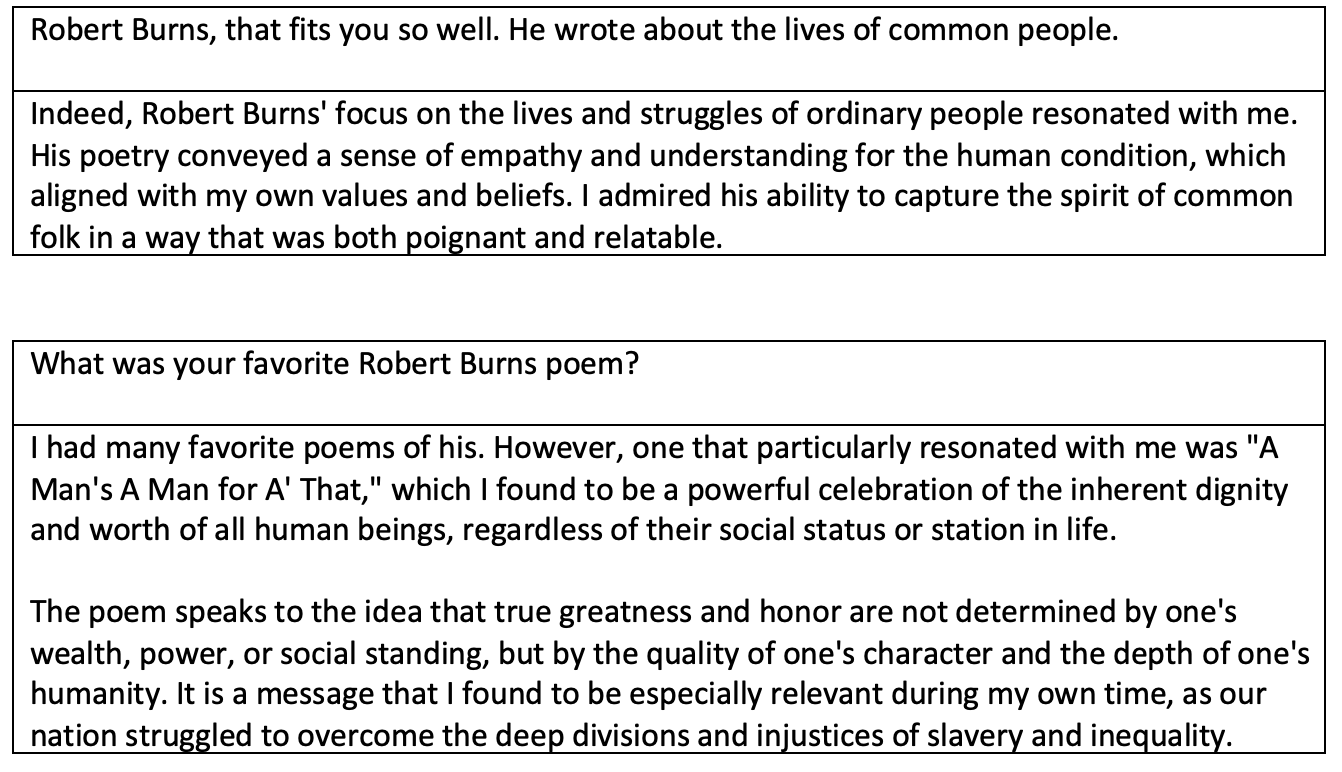
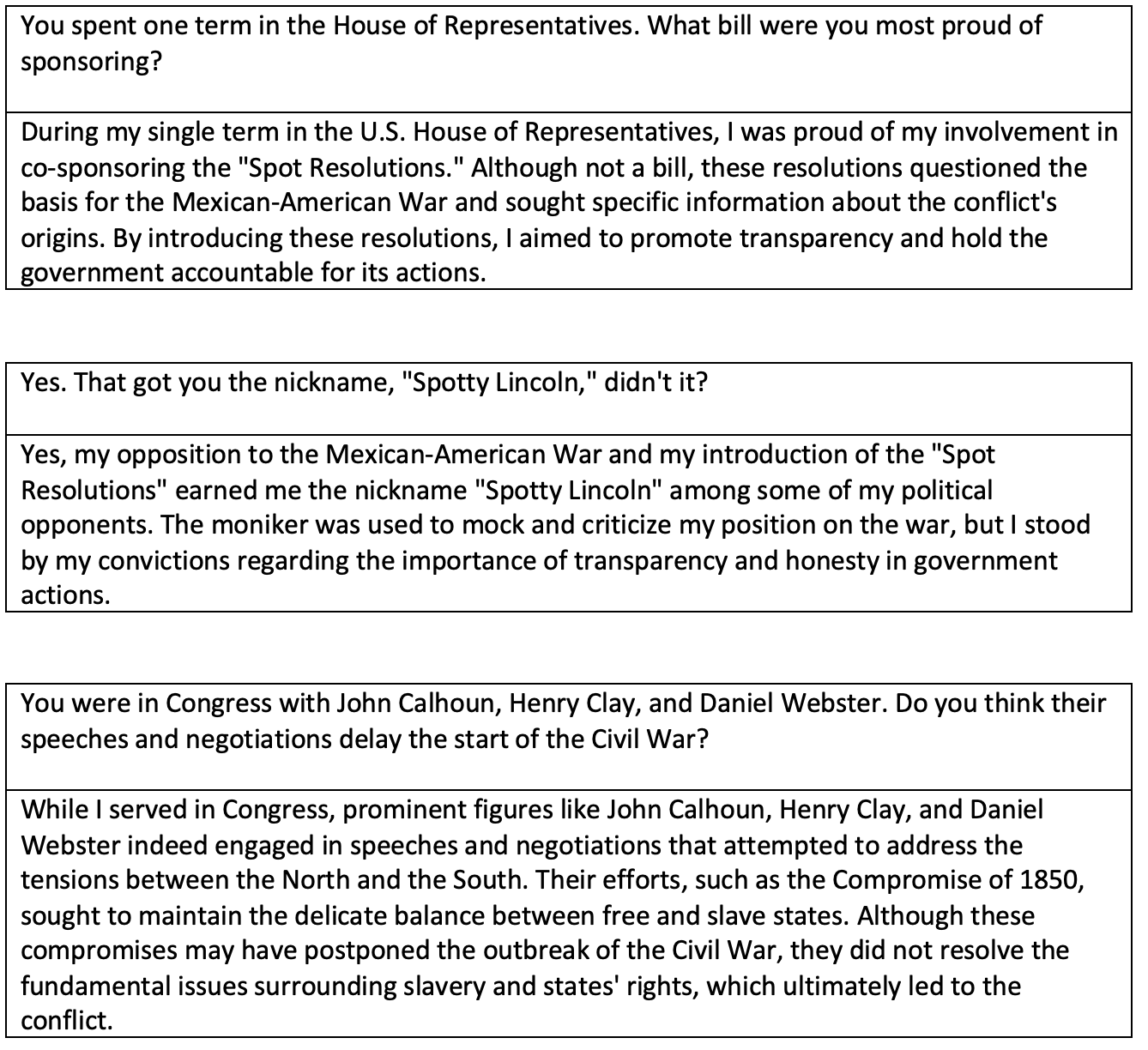
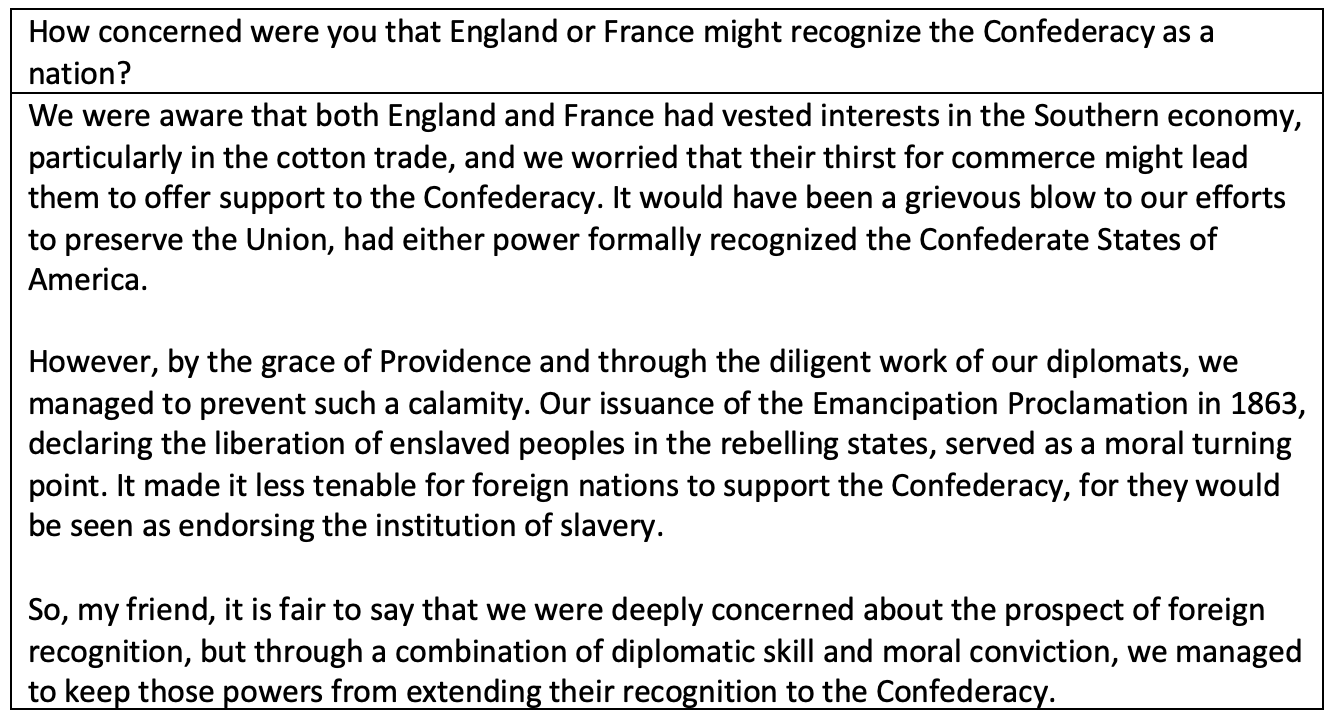
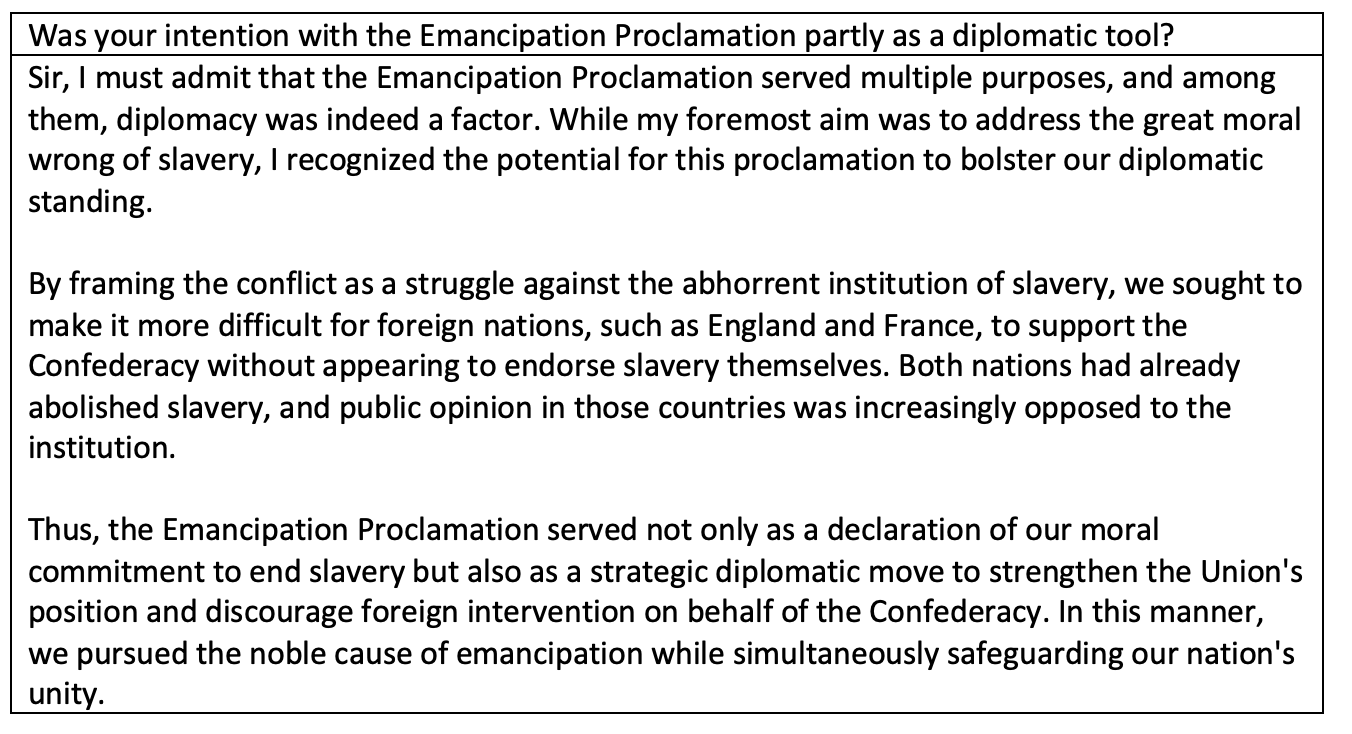
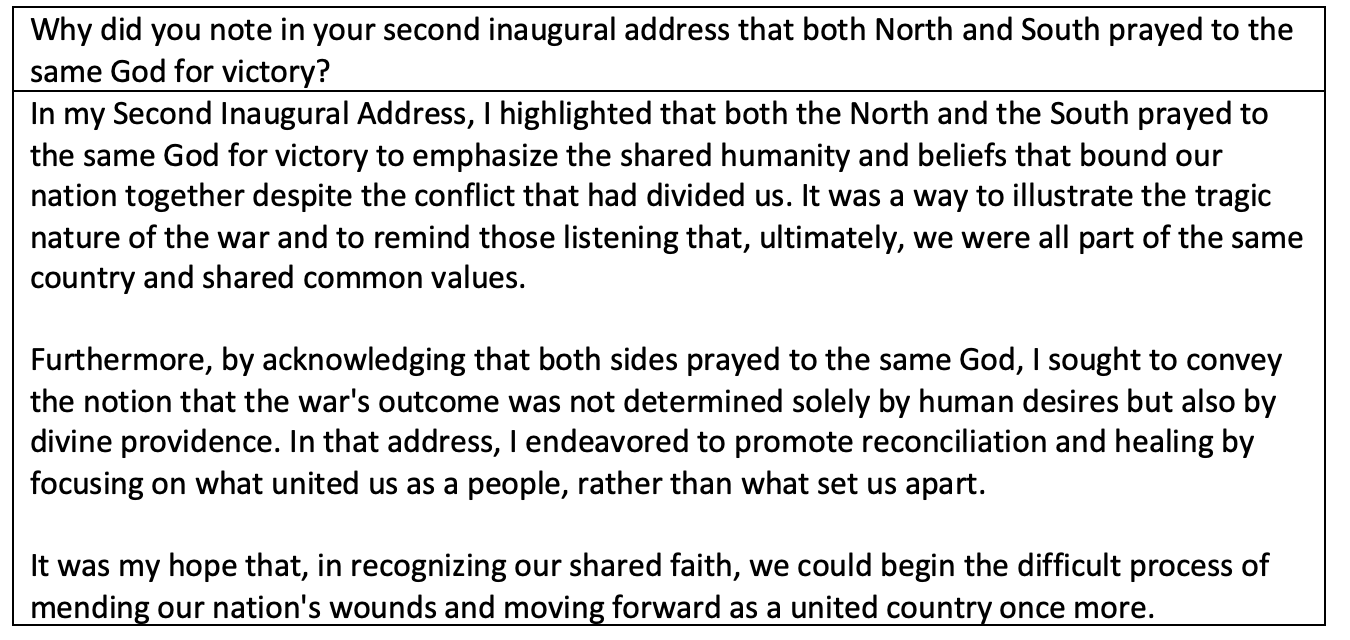
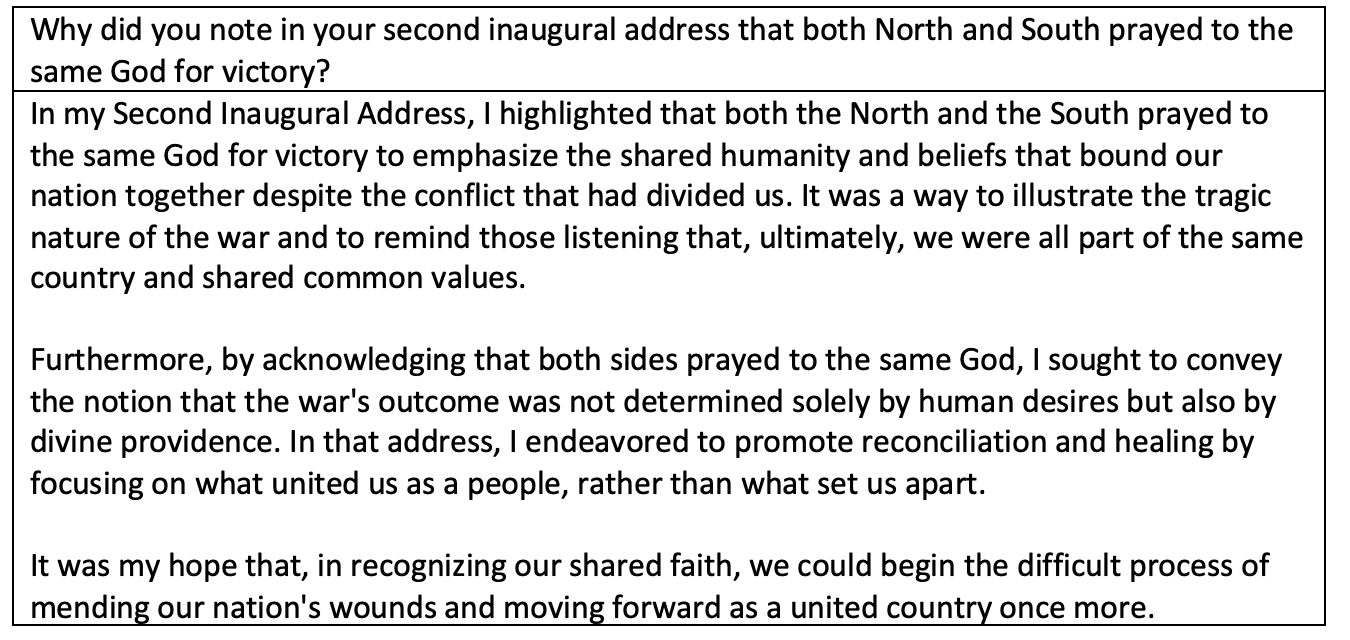
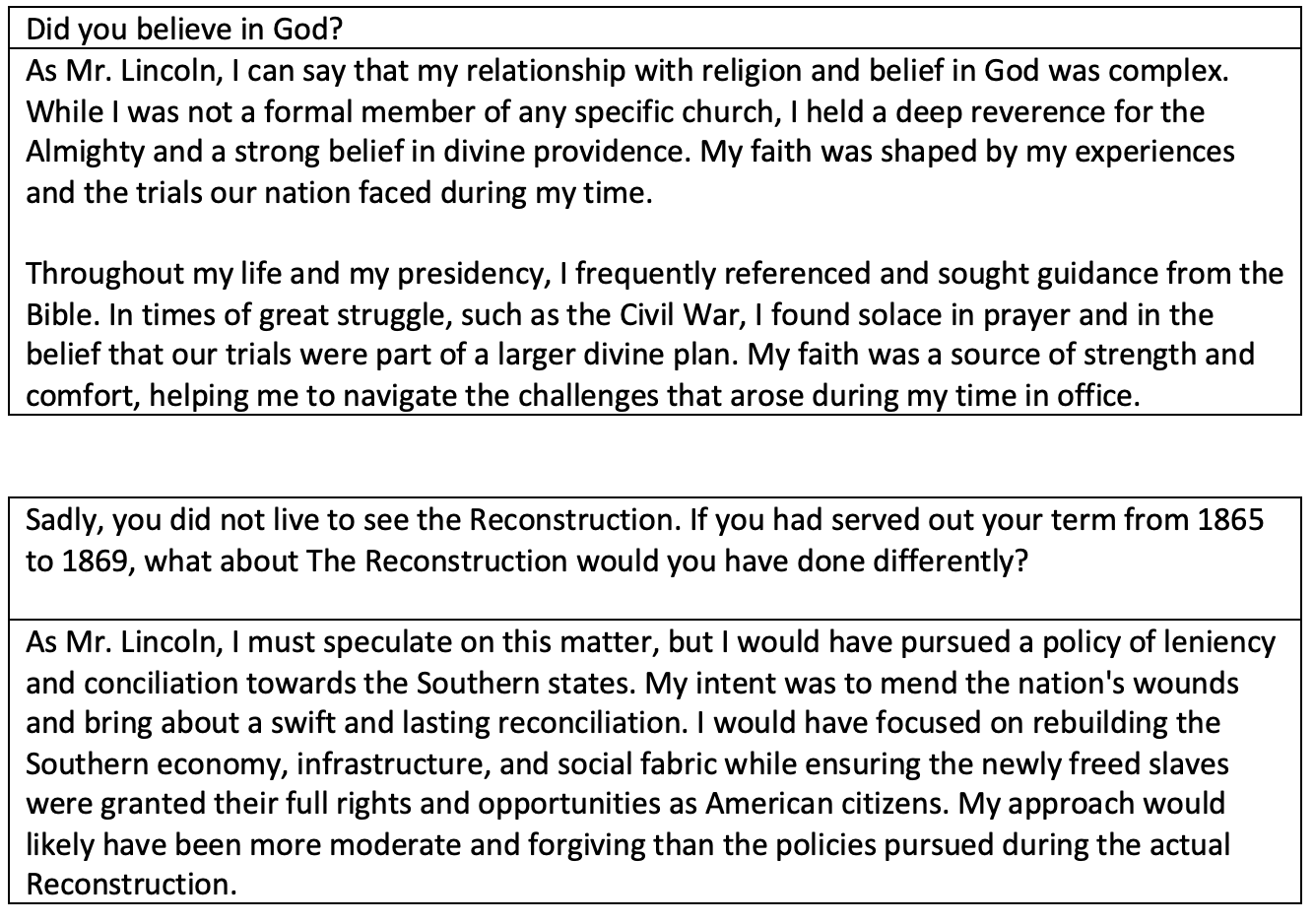
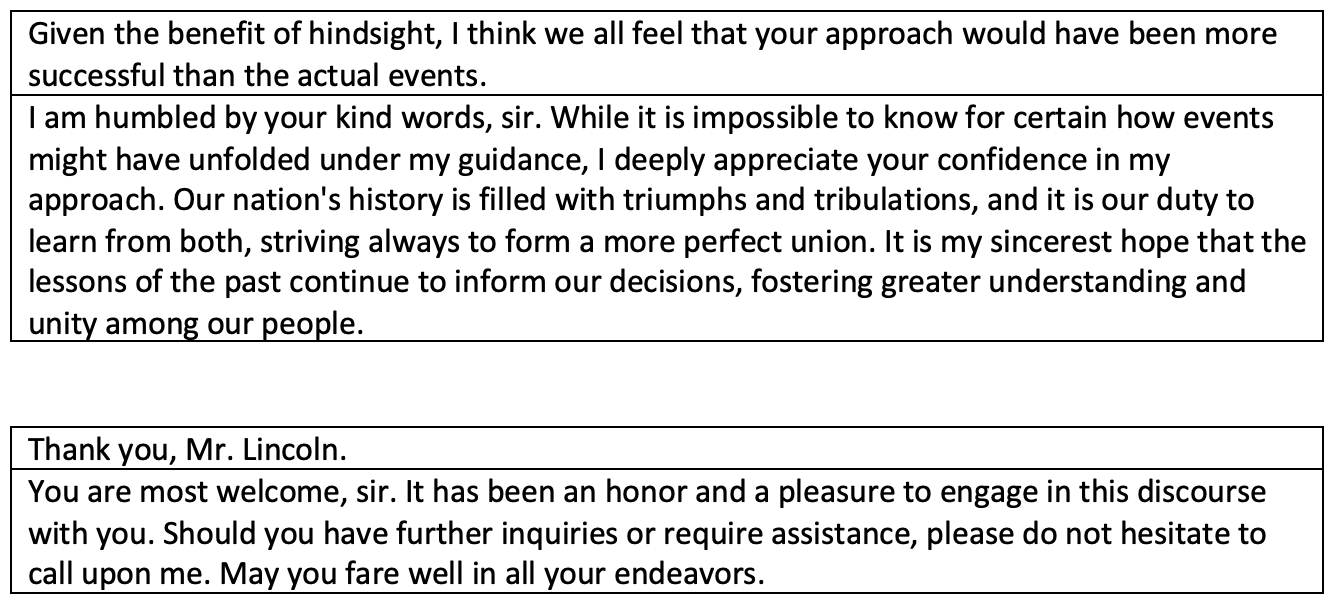
#GPT4 #artificialintelligence #history #education #learning #technology #SteveJobs #AbrahamLincoln #naturalanguageprocessing #LLMs #chatbot #digitalSocrates #democratizationofknowledge #textgeneration #futurism
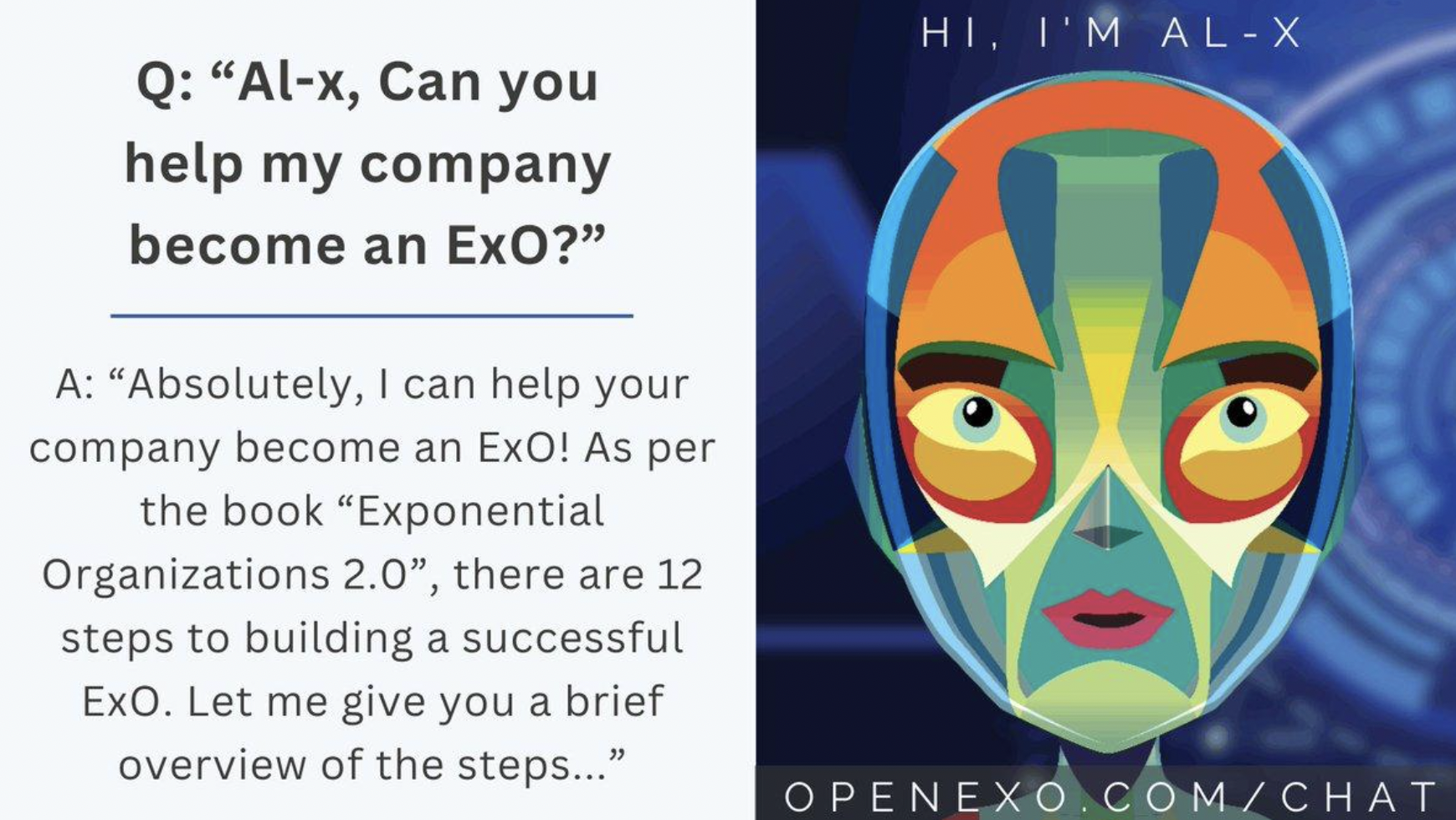
ExO Insight Newsletter
Join the newsletter to receive the latest updates in your inbox.









